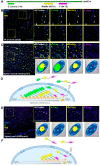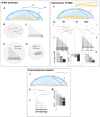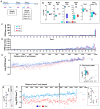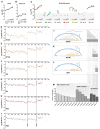When Size Really Matters: The Eccentricities of Dystrophin Transcription and the Hazards of Quantifying mRNA from Very Long Genes
- PMID: 37509720
- PMCID: PMC10377302
- DOI: 10.3390/biomedicines11072082
When Size Really Matters: The Eccentricities of Dystrophin Transcription and the Hazards of Quantifying mRNA from Very Long Genes
Abstract
At 2.3 megabases in length, the dystrophin gene is enormous: transcription of a single mRNA requires approximately 16 h. Principally expressed in skeletal muscle, the dystrophin protein product protects the muscle sarcolemma against contraction-induced injury, and dystrophin deficiency results in the fatal muscle-wasting disease, Duchenne muscular dystrophy. This gene is thus of key clinical interest, and therapeutic strategies aimed at eliciting dystrophin restoration require quantitative analysis of its expression. Approaches for quantifying dystrophin at the protein level are well-established, however study at the mRNA level warrants closer scrutiny: measured expression values differ in a sequence-dependent fashion, with significant consequences for data interpretation. In this manuscript, we discuss these nuances of expression and present evidence to support a transcriptional model whereby the long transcription time is coupled to a short mature mRNA half-life, with dystrophin transcripts being predominantly nascent as a consequence. We explore the effects of such a model on cellular transcriptional dynamics and then discuss key implications for the study of dystrophin gene expression, focusing on both conventional (qPCR) and next-gen (RNAseq) approaches.
Keywords: DMD; RNAseq; dystrophin; gene expression; mRNA; transcription.
Conflict of interest statement
The authors declare no conflict of interest.
Figures









References
-
- Warner L.E., DelloRusso C., Crawford R.W., Rybakova I.N., Patel J.R., Ervasti J.M., Chamberlain J.S. Expression of Dp260 in muscle tethers the actin cytoskeleton to the dystrophin-glycoprotein complex and partially prevents dystrophy. Hum. Mol. Genet. 2002;11:1095–1105. doi: 10.1093/hmg/11.9.1095. - DOI - PubMed
-
- Lai Y., Thomas G.D., Yue Y., Yang H.T., Li D., Long C., Judge L., Bostick B., Chamberlain J.S., Terjung R.L., et al. Dystrophins carrying spectrin-like repeats 16 and 17 anchor nNOS to the sarcolemma and enhance exercise performance in a mouse model of muscular dystrophy. J. Clin. Investig. 2009;119:624–635. doi: 10.1172/JCI36612. - DOI - PMC - PubMed
Grants and funding
LinkOut - more resources
Full Text Sources

